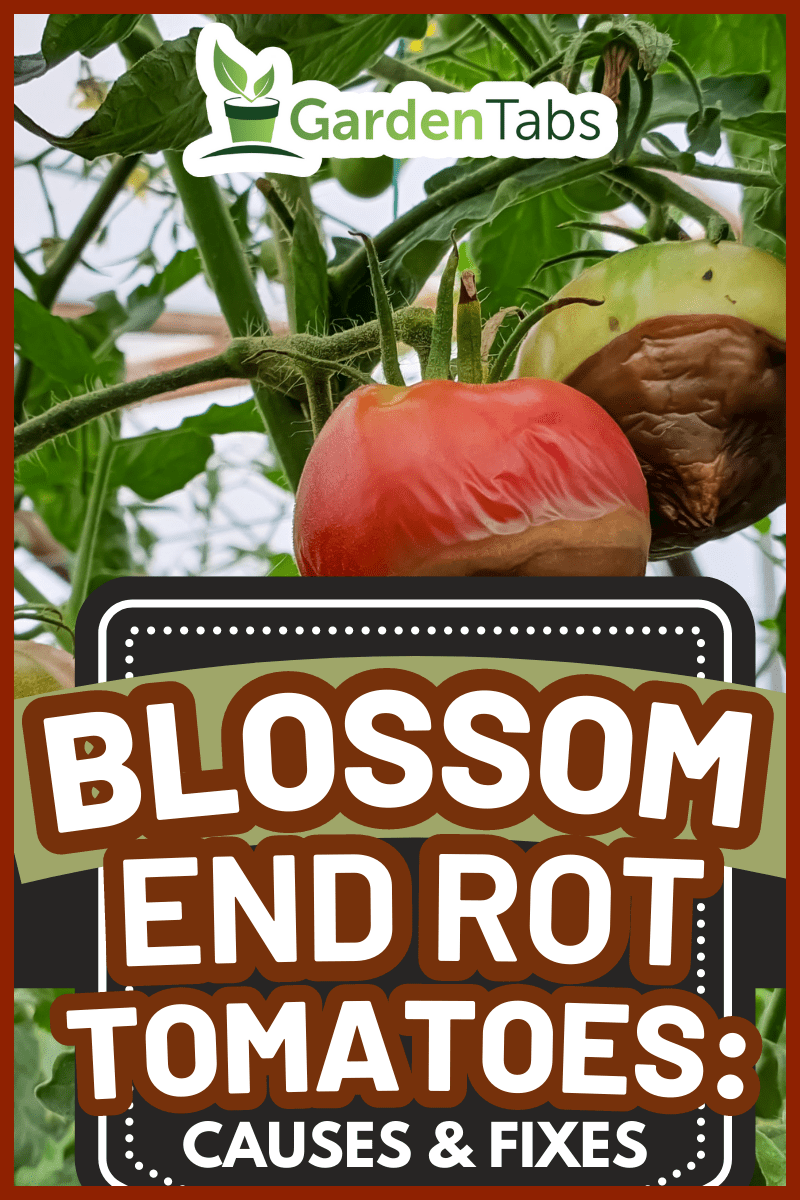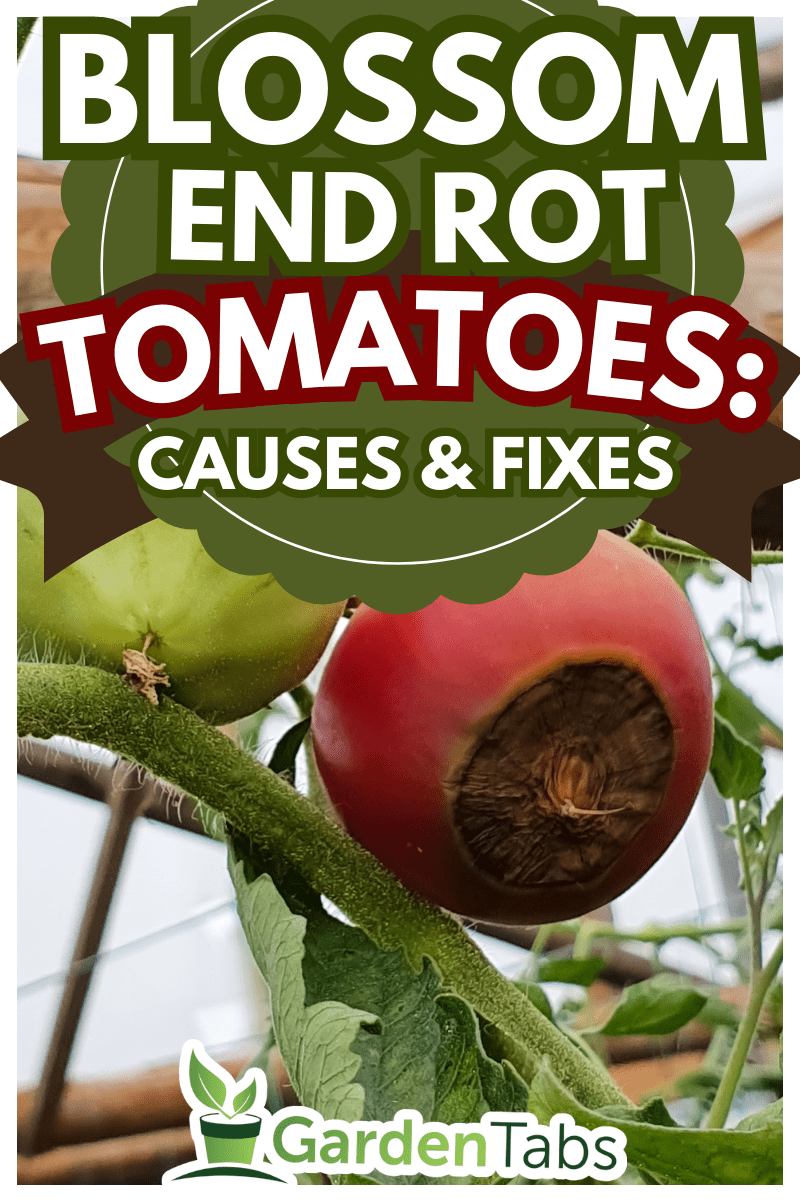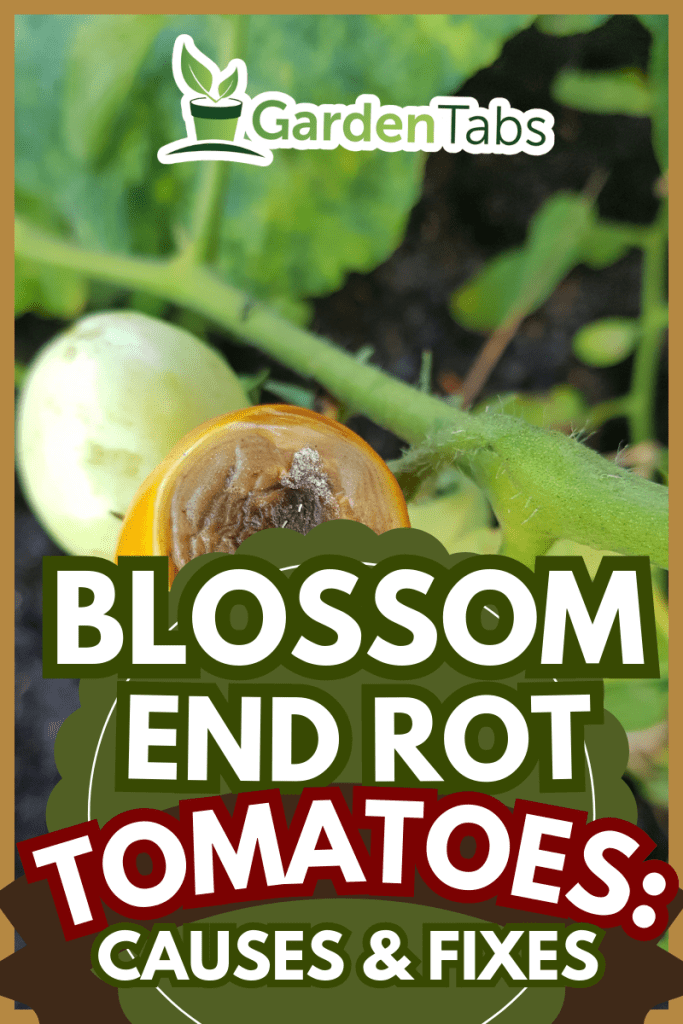While it's not a disease or pest, blossom end rot can be a frustrating problem for gardeners, as it can cause significant damage to crops.
In this article, we'll explore the causes of blossom end rot in tomatoes and provide practical tips for preventing and treating this frustrating condition.
Whether you're a seasoned gardener or a beginner, you'll find the information you need to keep your tomatoes healthy and thriving.
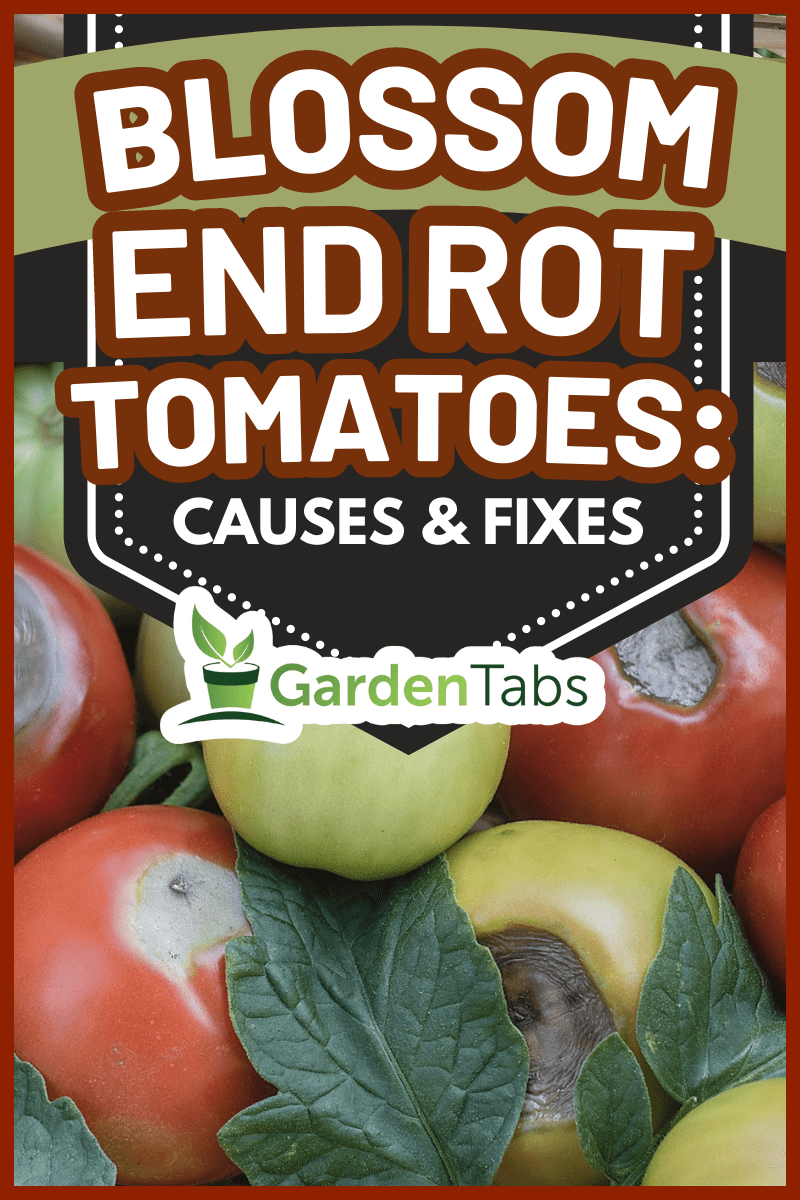
Causes of Blossom End Rot

Blossom end rot in tomatoes is a physiological disorder that occurs due to a lack of calcium.
Calcium is essential for the development of the cell walls in tomatoes.
When calcium is deficient, the cells break down, and the tissue at the blossom end of the tomato becomes dark brown or black.
The lack of calcium is not due to a lack of calcium in the soil. Soil calcium levels are often sufficient, and the problem occurs due to the inability of the plant to take up and transport calcium to the fruit.
This can happen due to various environmental factors that affect the plant's ability to absorb calcium, such as:
- Inadequate watering
- Extreme temperatures
- High humidity
Symptoms of Blossom End Rot
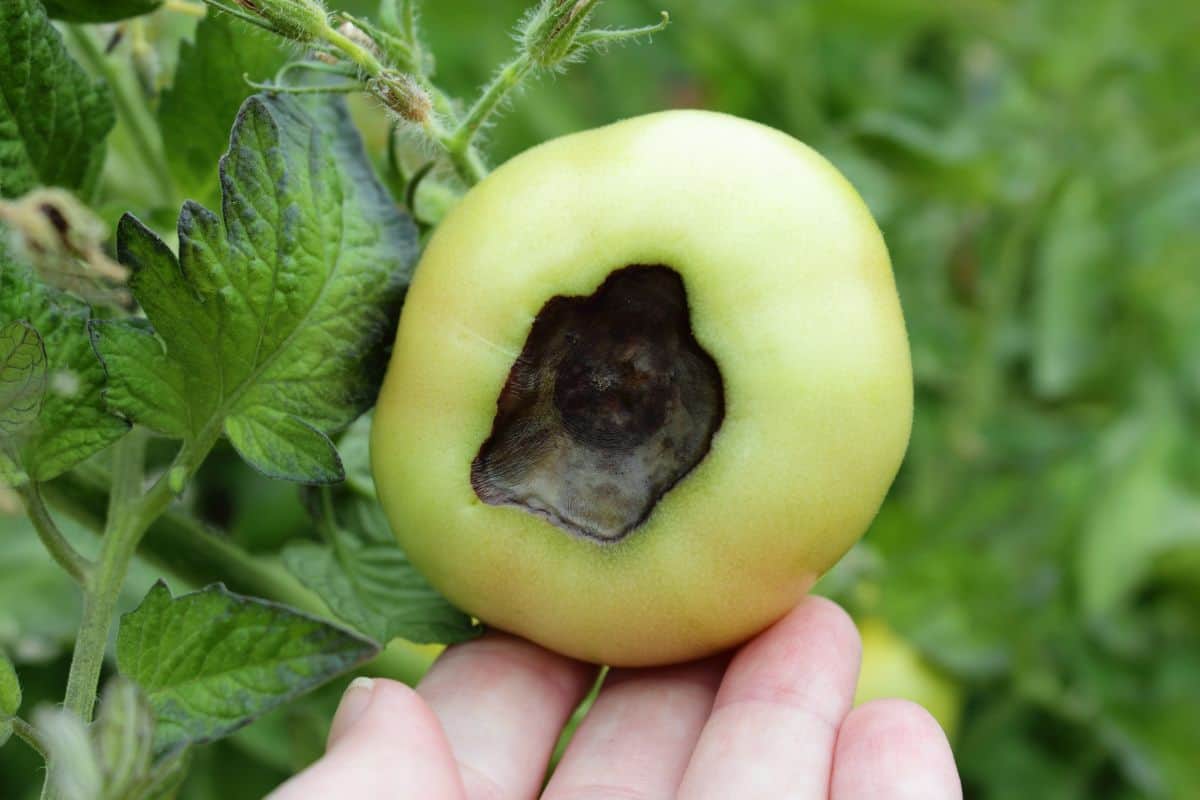
A water-soaked spot at the blossom end of the tomato is a sign of blossom end rot. The spot will eventually turn dark brown or black and become sunken.
As the problem progresses, the affected area may enlarge, and the fruit may become misshapen.
In severe cases, the entire fruit may be affected, and the plant may stop producing fruit altogether.
Treating Blossom End Rot
There are several effective methods for treating blossom end rot.
Calcium Supplements
To address the lack of calcium in the soil, gardeners can use calcium supplements.
These supplements can be added directly to the soil or sprayed onto the plants. Some popular calcium supplements include:
- Calcium nitrate
- Calcium chloride
- Gypsum
Note that calcium supplements should be used in moderation.
Pruning Techniques
Another way to treat blossom end rot is through pruning.
By removing the affected fruit, leaves, or stems blocking sunlight, gardeners can improve air circulation and reduce the risk of future infections.
Additionally, pruning can help redirect the plant's energy toward healthy fruit production.
Pest Control
Pests like aphids and spider mites can also cause blossom end rot.
Gardeners use pest control methods, such as insecticidal soap or neem oil, to address this issue.
It is important to follow the instructions carefully when using these products, as overuse can harm beneficial insects and pollinators.

Check out this Neem oil on Amazon.
Preventing Blossom End Rot
Blossom end rot can be prevented with proper care and attention to the needs of your tomato plants.
Here are some tips to help you avoid this common problem:
Soil Preparation
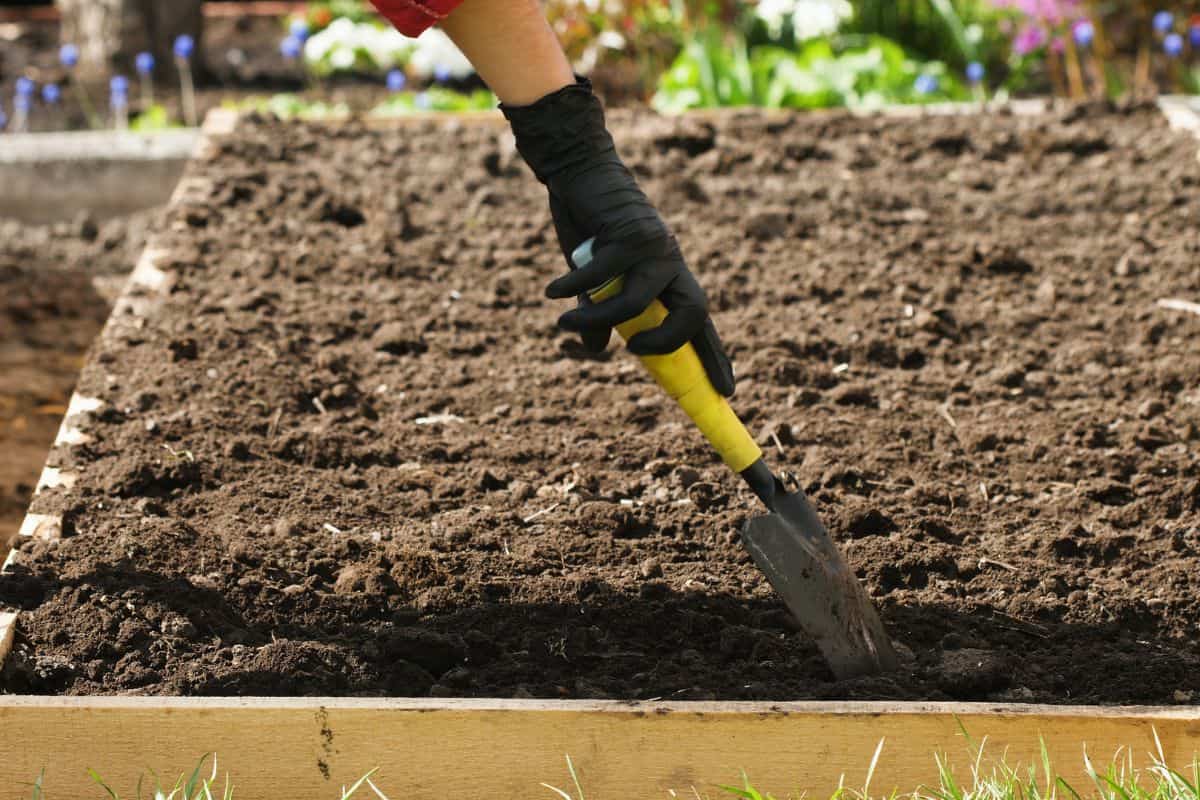
Start by preparing your soil before planting.
Choose a well-drained soil high in organic matter with a pH level between 6.5 and 7.5.
Apply fertilizers low in nitrogen but high in superphosphate, with numbers similar to 4-12-4 or 5-20-5, to reduce the chances of blossom-end rot.
Watering Techniques
Water your tomato plants regularly and consistently.
Avoid fluctuations in watering and ensure they get a full inch of water each week, whether it's from irrigation or rainfall.
If you water too much, your roots may rot, leading to blossom-end rot.
On the other hand, if you don't water enough, the plant may not be able to absorb the calcium it needs to prevent the problem.
Consider using a drip irrigation system to ensure that your plants receive a consistent amount of water. This will also help prevent the spread of disease.
Fertilizer Application
Use a balanced fertilizer that contains calcium, such as a 15-15-15 or 10-10-10 blend. Apply it according to the instructions on the package.
Avoid over-fertilizing, leading to excessive vegetative growth and reduced fruit production.
Instead, use a slow-release fertilizer that provides a steady supply of nutrients over time.
Consider using a foliar spray of calcium nitrate or calcium chloride to help prevent blossom-end rot.
This can be applied directly to the plant leaves and is absorbed quickly.
Can You Eat Tomatoes With Blossom End Rot?
Blossom end rot causes the end of the tomato to rot, making it inedible.
However, this does not mean the entire tomato is no longer safe to consume.
According to a study, eating tomatoes affected by blossom end rot is safe.
The only part that should be removed is the bottom, where the rot has affected the fruit. This is the only part that should not be eaten.
It is important to note that if the damage is too severe, it may be necessary to dispose of the entire tomato.
Therefore, cutting off any brown or black parts before using them in your favorite recipes is best.
Does Powdered Milk Prevent Blossom End Rot?
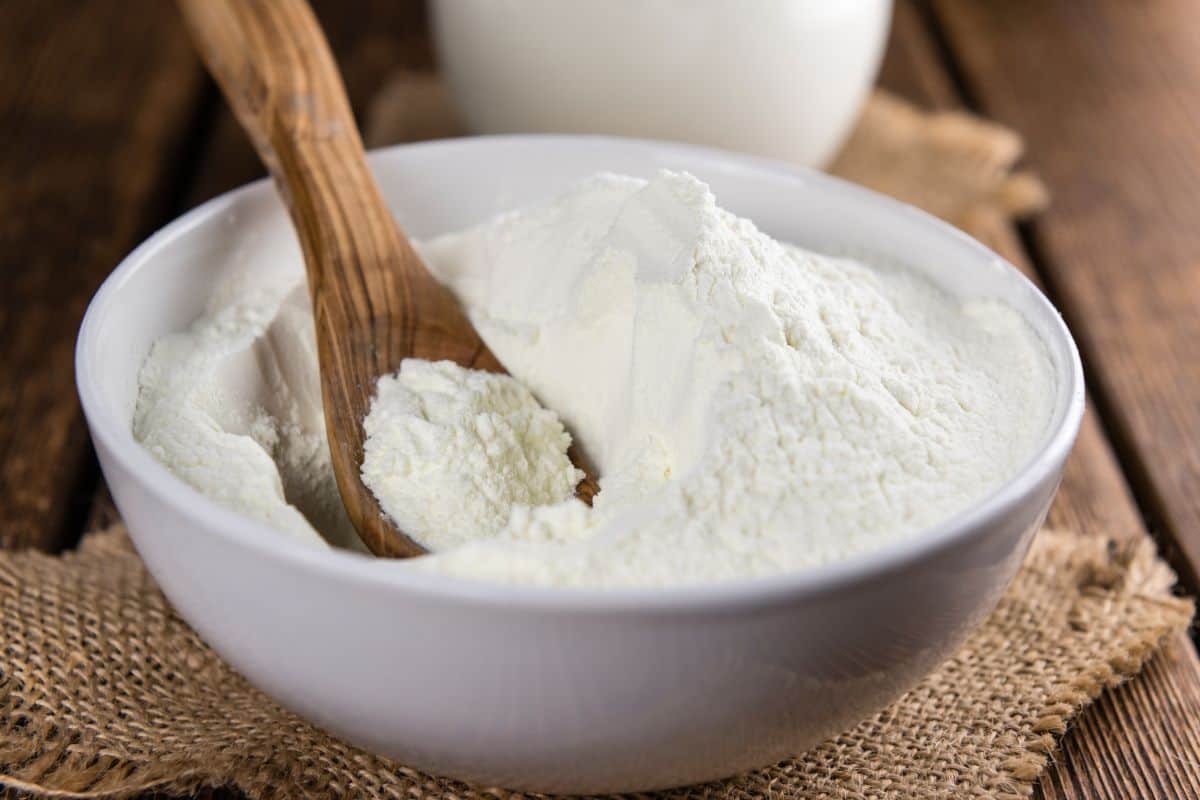
Adding powdered milk to the soil can be a helpful method for preventing blossom end rot in tomato plants and improving the overall health of your tomato plants.
It is recommended to mix a solution of 50% milk and 50% water and apply it to the soil around the base of the plant.
It is also important to note that while powdered milk can help prevent blossom end rot, it is not a cure.
A Quick Recap
Blossom end rot in tomatoes is caused by a lack of calcium in the fruit due to various environmental factors that affect the plant's ability to absorb calcium.
Symptoms include a dark brown or black sunken area at the blossom end of the fruit.
Gardeners can use calcium supplements, pruning techniques, and pest control methods to treat the problem.
It is important to address the issue promptly to prevent it from spreading.
If you found this post helpful, check out these related articles:
Tomatillo Plant Not Producing Fruit – What To Do?
Watch This Simple Gardening Hack That Will Save Your Tomatoes From Pests
Woman Grows Plentiful Tomato Bounty With This Garden Structure—See For Yourself!

